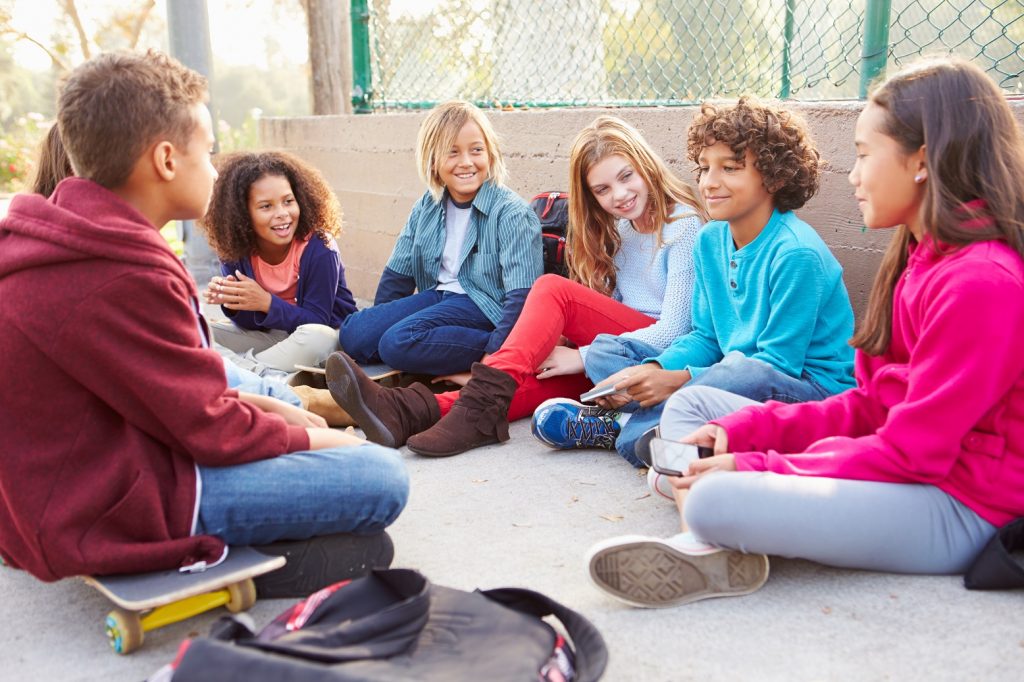Freya’s languages interact in subtler ways, too. For example, she might ask her friend’s mum: “Can I play with the bike of Anna?”, or she might exclaim: “So annoying! The table is all the time wobbling!” Most of Freya’s classmates would probably ask for “Anna’s bike”, or complain that the table is “wobbling all the time”. What we hear in Freya’s speech is the influence of her Dutch language knowledge on her English sentences: The apparently unusual word order in both cases mirrors the order in Dutch. In the first example, de fiets van Anna (literally “the bike of Anna”) is a typical way to phrase a sentence like this in Dutch. The second example also mirrors Dutch. When there are two verbs (like “is” and “wobbling”) in a Dutch sentence, the second verb typically appears at the end of the sentence. So even though these sentences are entirely made up of English words, there is some Dutch ‘hidden’ in there. In what follows, we will tell you more about how bilingual children use language, when and why their different languages influence each other and why that is totally normal in bilingual development.
Cross-linguistic influence
Understandably, Freya’s ‘mixing up’ of languages can cause concern among parents and teachers, who might wonder whether she is confused or if she is at risk of falling behind the other children in terms of language development. Freya’s parents might be considering contacting a speech and language therapist, or her teachers might advise her parents to use more English at home. But in fact, the influence of one language on another is quite common for bilinguals. Freya is not confused, nor does she have any developmental difficulties. Language scientists refer to this phenomenon as cross-linguistic influence, and it is just a natural by-product of bilingualism. It happens because bilinguals cannot switch off the other language in their minds: Even when Freya is speaking English, her Dutch is also still ‘on’. This is how some Dutch influences can sneak into her English. So it doesn’t mean that Freya’s mum has to start speaking English to her. Indeed, if Freya’s mum is more fluent in Dutch than in English, researchers would generally advise her to continue to speak Dutch with Freya, since it has been found that children’s language development benefits from more proficient input.
Freya’s languages are influencing each other because she is a typically developing bilingual child. But does this mean that bilingual children are constantly experiencing cross-linguistic influence? Is talking actually harder for them, and do they often mix up word orders or use words from another language? The answer is simple: no. We don’t hear these types of mixed-up word orders or blended utterances from every bilingual, and even in people who do produce them, they don’t happen all the time. Crucially, if cross-linguistic influence does occur, it doesn’t mean that a bilingual child like Freya has trouble expressing herself fluently and effectively. But if neither of a bilingual child’s two languages are ever truly switched off, yet cross-linguistic influence also does not happen all the time and for every bilingual, why does cross-linguistic influence happen and when? Over the past decades, many studies have been conducted to answer this particular question.
Which factors contribute to cross-linguistic influence?
Recently, language scientists from Radboud University grouped together the results from more than 25 previous studies on cross-linguistic influence. In total, the studies included 750 children who spoke 17 unique language combinations. The first important conclusion is that cross-linguistic influence occurs for children of all ages, so it’s not necessarily something a child like Freya will ‘grow out of’. Other studies also show that cross-linguistic influence happens in adults, too, so it seems to be just a normal part of being a bilingual person.
The researchers also found that the more you speak one language, the more influence it has over the other. So for Freya, living in London, surrounded by mostly English speakers, the influence of her English on her Dutch would likely be stronger than the other way around. Changes in a child’s environment can play a role, too. For instance, if Freya and her family were to move to the Netherlands, her Dutch might start to have a greater influence on her English. As Dutch becomes more present in Freya’s day-to-day life, its influence on her English may become more visible, and she might start to say sentences like “the bike of Anna” more often. (For examples of how cross-linguistic influence can change during a child’s early years, read Julia Misersky’s blog What I learned about language development during the COVID-19 lockdown – Part III: Bilingualism is what you make of it.) In short, all kinds of known and unknown factors have an effect on whether and how cross-linguistic influence occurs in the speech of a bilingual.
Nothing to worry about
When parents or teachers compare bilingual children to their monolingual peers, they might have concerns about their language development. But remember that cross-linguistic influence is totally normal for bilingual children! As we now know, many factors influence how bilingual children use language and this is nothing to worry about. In fact, most children around the world grow up with more than one language, so we should really move away from the idea that speaking only one language is the standard. Freya doesn’t speak exactly the same as some of her classmates, but she doesn’t have to – she’s bilingual, and so are many others. So next time you hear a child say something that might sound unusual to you as a monolingual speaker, don’t worry and appreciate the fact that this child is mastering not just one, but two (or even more) languages!
Writers: James Algie, Chantal van Dijk, Figen Karaca, Elly Koutamanis, and Joyce van Zwet
Editor: Laurel Brehm
Dutch translation: Elly Koutamanis
German translation: Barbara Molz
Final editing: Eva Poort, Sophie Slaats

